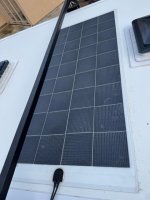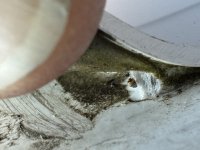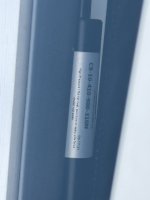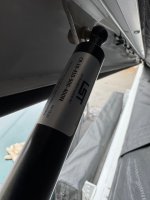First of all, I’m planning to add 40 pounds of solar panels to the roof -- that’s 4, 10 pound semi flexible 200w panels pretty much evenly dispersed across the roof surface; two on the rear and two on the front. Has anyone added this kind of weight overhead? Is this going to make the roof impossible to open?
Update: The 40 pounds was
no go.
To simulate 40# of rooftop solar, I decided to put a 10 pound water jug on each of the four corners of the roof, and then tried to lift it. While I could lift it up without veins bulging out of my forehead hulk mode, it wasn’t exactly easy, and I don’t think my wife could do it.
In the half-second between applying upward lift, and reaching with one hand for the hinge lock to push it into place, the roof wanted to slam back shut
hard. So it was kind of a challenge. Upgrading the gas struts would mitigate this specific issue.
When closing the roof with the extra 40#, the final half slams shut so hard that I would be concerned about doing damage after, say, 500 slams. Either micro cracks appearing somewhere, or something loosening over time and catastrophically failing during a ‘slam’. Coming up with some kind of small portable worm drive raising/lowering mechanism (something like a scissors jack) would mitigate this specific issue.
Finally, I’ve had the forward half of the roof squish me a few times into the bed trying to close it, typically when I’m opening only the forward half of the roof to access the forward fan because I forgot to close it up. Not in a bad way, but more of “oh gee I need to be careful, I could get hurt if I’m twisted a particular way”. With the way it slams shut with the 40 pounds on it, and the likelihood of rushing to close the forward fan because it was discovered en route, one could absolutely get hurt
badly in this situation. Gas strut upgrade would not help here.
So I decided that 40 pounds of additional weight on the roof is too much to safely and comfortably manage.
I tried with just 20 pounds, and that was much nicer, so I have revised my plans and will be adding “only” 2, 200-watt flexible solar panels to the roof. I will also be removing the two crossmember bars that I never use, and I’m going to carefully knife the old solar panel off as well.
Happy new year!




